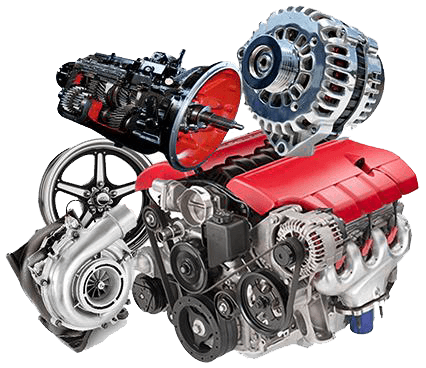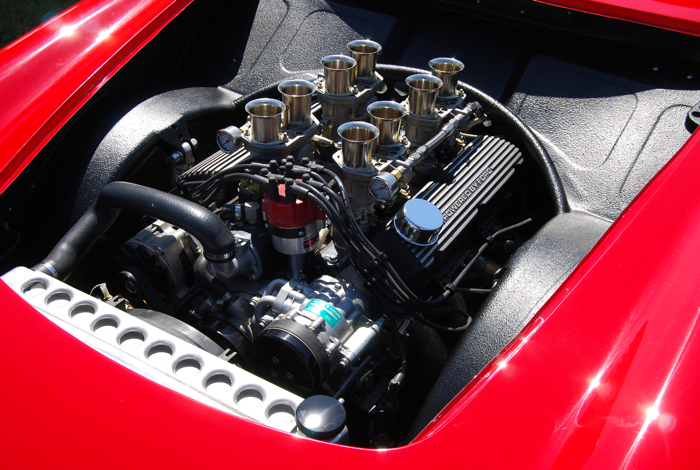Checking Out the most recent Technical Technologies in Import Engines and How They Boost Driving Experience
In the world of automobile design, the landscape of import engines is undertaking a profound makeover driven by innovative technological advancements. From the evolution of turbocharged engines to the integration of hybrid innovation, the most recent improvements are revolutionizing the driving experience in methods previously unimaginable. As import manufacturers push the limits of efficiency and efficiency through enhanced fuel injection systems and sophisticated engine administration options, the question occurs: How do these developments really affect the way we connect with our lorries on the roadway?

Evolution of Turbocharged Engines
In the auto market, the advancement of turbocharged engines has substantially changed the landscape of performance and performance. Turbocharging, once mainly seen in high-performance cars, has currently come to be a mainstream modern technology adopted by a vast array of vehicles, from compact hatchbacks to luxury sedans. The essential concept behind a turbocharged engine is straightforward yet effective - by compeling even more air right into the burning chamber, it enables more fuel to be melted, causing raised power outcome.
One of the crucial benefits of turbocharged engines is their capability to provide more power from smaller sized, extra fuel-efficient engines. This downsizing pattern has actually resulted in a decrease in exhausts without jeopardizing performance, making turbocharging an appealing choice for car manufacturers aiming to fulfill stringent ecological regulations. Turbocharged engines offer boosted torque at reduced RPMs, supplying motorists with a more receptive and vibrant driving experience.
As modern technology remains to advancement, we can expect more technologies in turbocharging, bring about even better levels of efficiency and effectiveness in the automobile industry.
Improvements in Gas Injection Systems
With the continuous development of vehicle technology, considerable innovations have actually been made in gas injection systems. Modern fuel injection systems have actually developed to provide fuel more successfully and exactly right into the engine cyndrical tubes, enhancing general engine performance and gas efficiency. Among the key developments in gas shot systems is the change from conventional port gas shot (PFI) to even more innovative straight gas injection (DFI) technology. DFI systems inject fuel directly into the combustion chamber at high pressures, resulting in much better gas atomization and combustion, leading to improved power result and decreased emissions.
In addition, the assimilation of electronic control systems (ECUs) and sensors in gas injection systems has permitted for real-time changes to fuel shipment based on various elements such as engine load, temperature, and driving conditions. Additionally, advancements in gas injector layout, products, and spray patterns have actually added to cleaner burning and smoother engine procedure.
Integration of Crossbreed Innovation
The advancement of gas shot systems towards higher performance and performance has established the phase for the smooth combination of hybrid innovation into modern-day engines. Hybrid innovation incorporates making use of standard interior combustion engines with electric propulsion systems, providing improved gas performance and lowered discharges. By integrating electric motors and batteries into the powertrain, crossbreed engines can supplement the interior burning engine during acceleration or low-speed driving, consequently boosting overall efficiency.

Boosted Engine Monitoring Solution
What are the essential innovations in engine management systems that are improving the efficiency and effectiveness of modern engines? Engine management systems have actually gone through substantial improvements to enhance engine efficiency and efficiency.
In addition, contemporary engine management systems make use of advanced formulas and expert system to analyze the data accumulated by sensing units and make dynamic changes to variables such as ignition timing, gas shot, and turbocharger boost stress. This degree of accuracy and adaptability cause enhanced engine responsiveness, increased power output, and lowered gas this page usage.
Furthermore, engine administration systems now feature innovative diagnostic capacities that can detect and address problems such as misfires, sensor malfunctions, and fuel system irregularities in real-time, therefore boosting overall engine reliability and long life. These innovations in engine management systems play a crucial role in boosting the driving experience by providing optimal performance, gas effectiveness, and reliability.
Effect of Lightweight Materials
Incorporating light-weight products in engine manufacturing has actually revolutionized the automobile market's technique to improving fuel effectiveness and performance. The use of materials such as carbon titanium, light weight aluminum, and fiber has actually substantially minimized the general weight of engines, bring about improved power-to-weight ratios and boosted gas economy. These lightweight materials offer a greater strength-to-weight ratio compared to typical products like steel, permitting higher durability without endangering performance.
Among the essential benefits of utilizing lightweight materials in engine building and construction is the reduction of inertia, causing quicker engine action times and enhanced overall car agility. Furthermore, the lighter weight contributes to Check Out Your URL lower power usage, making cars a lot more eco-friendly by decreasing emissions.
Additionally, the execution of light-weight products in engine parts such as pistons, linking poles, and crankshafts has actually enabled designers to push the borders of performance without giving up dependability (import engines). This innovation has led the way for a lot more powerful and effective engines that provide a superior driving experience while meeting stringent emissions standards
Final Thought
To conclude, the most recent technological advancements in import engines have significantly boosted the driving experience. From the development of turbocharged engines to improvements in gas shot systems, combination of crossbreed innovation, enhanced engine management systems, and using lightweight materials, these developments have jointly boosted efficiency, gas effectiveness, and overall driving characteristics. As innovation continues to development, recommended you read we can anticipate much more interesting developments in the future of import engines.
Modern gas injection systems have advanced to supply fuel extra efficiently and specifically into the engine cylinders, boosting total engine performance and gas effectiveness - import engines. By incorporating electrical motors and batteries right into the powertrain, hybrid engines can supplement the internal combustion engine throughout acceleration or low-speed driving, therefore boosting overall performance
What are the vital developments in engine monitoring systems that are enhancing the efficiency and efficiency of modern engines? Engine monitoring systems have gone through significant improvements to optimize engine performance and effectiveness. From the advancement of turbocharged engines to innovations in fuel injection systems, combination of crossbreed modern technology, improved engine monitoring systems, and the usage of lightweight materials, these innovations have actually collectively improved efficiency, fuel effectiveness, and total driving dynamics.